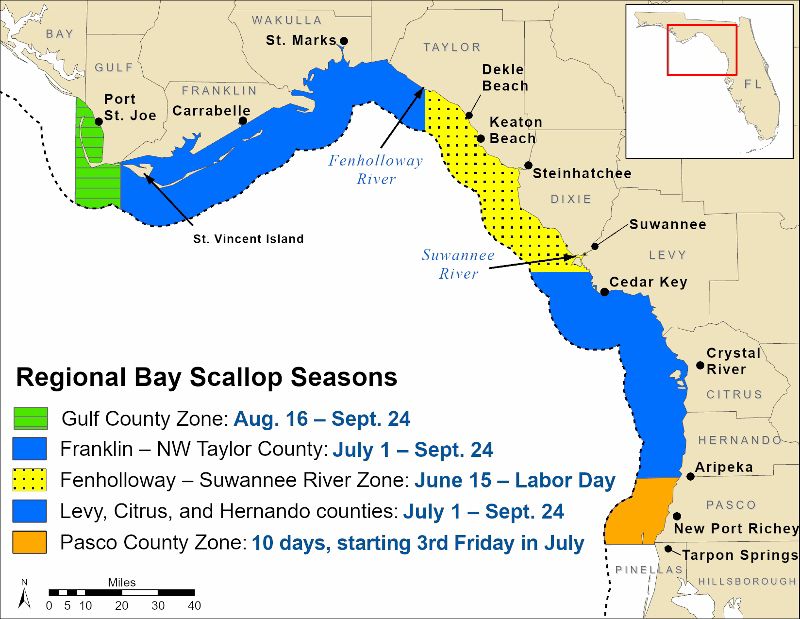CITRUS COUNTY, Fla. — Florida’s scalloping season opens July 1 in most of the Florida counties that allow the marine pastime, and every year tens of thousands head to the state’s Nature Coast to snorkel the shallow waters and hunt the delicious bivalves.
What You Need To Know
- Scalloping season opens in most counties on the Nature Coast July 1
- Local guides are not worried about Piney Point fallout or red tide affecting the harvest
- Know the rules, regulations and limits before you go
Scalloping isn’t just a novel, exciting and healthful way to spend a little time in the Gulf; given the relatively short harvest season, it’s also a sustainable way to (literally) bag your own seafood meal. All you really need besides a boat is a mask, snorkel, dive bag, dip net and some flippers, though for your first time hiring a knowledgeable guide to show you the ropes — and, of course, where the tasty shellfish can be found.
“It’s usually a family activity, though sometimes you’ve got college guys who are more interested in staying in the boat and drinking beer,” says Captain Paul Cross, who guides out of the Plantation on Crystal River resort’s Adventure Center. “In that case, our guides can usually find more than their limit for them.”
They can be hard to find at first, but once their ridged shells and multiple electric-blue eyes become familiar, they’re easier to spot. The number of scallops each snorkeler or boat is allowed to keep per day varies from area to area (see below), but a good guide will make sure you’ll get your limit, and if you don’t have a saltwater fishing license for the state of Florida, theirs will cover you for the day.
“It’s like an adult Easter egg hunt,” says Cross.
The gulf’s scallop population is extremely sensitive to water conditions and environmental changes. Every time a patch of red tide hits the Tampa Bay region in spring or early summer, local scalloping fans look northward with worry. The uncertainty on how the Piney Point disaster will affect the ecology has added to concerns this year.
Cross, a native Floridian and decades-long veteran of the industry, says those a little further south needn’t cancel their plans.
“We’ve never had an experience with red tide,” he says. “We have the Homosassa River, the Chassahowitzka River, the Crystal River pumping out so much fresh water, it keeps all that stuff offshore or down south.
“We don’t anticipate that being any issue at all.”
So if you’re looking for a way to hit some clean, clear Florida coastal waters and bag yourself an ultimate locally harvested dinner, check out the Florida Fish and Wildlife Conservation Commission’s wealth of knowledge on the subject of scalloping, and plan a short trip upstate.
Florida scalloping rules & regulations

Seasons (North to South)
- Gulf County Zone: Aug. 16-Sept. 24
- Franklin, Wakulla, Northwest Taylor counties: July 1-Sept.24
- Taylor, Dixie counties (Fenholloway through Suwannee Rivers Zone): June 15-Labor Day
- Levy, Citrus, Hernando Counties: July 1-Sept. 24
- Pasco County (limited season): July 16-25
Bag Limits
- Everywhere but the Fenholloway through Suwannee Rivers Zone: Two gallons of whole scallops in shell or one pint of shelled scallop meat per person, or 10 gallons of whole scallops in shell or a half-gallon/four pints of shelled scallop meat per vessel
- Fenholloway through Suwannee Rivers Zone: One gallon of whole scallops in shell or one cup of shelled scallop meat per person, or five gallons whole scallops in shell or two pints shelled scallop meat per vessel (June 15-30); from July 1 through Labor Day, the limit is the same as everywhere else.
A state-issued saltwater fishing license is required for harvesting scallops unless you are with a licensed guide.



